Are you considering leasing equipment for your business but unsure where to start? Crafting a well-structured equipment lease agreement is crucial to protect both parties involved while ensuring a smooth transaction. This comprehensive letter template will guide you through the essential components of your lease, from outlining terms and payment schedules to detailing responsibilities and maintenance. Ready to dive deeper into your leasing options? Read on to unlock valuable insights and tips!
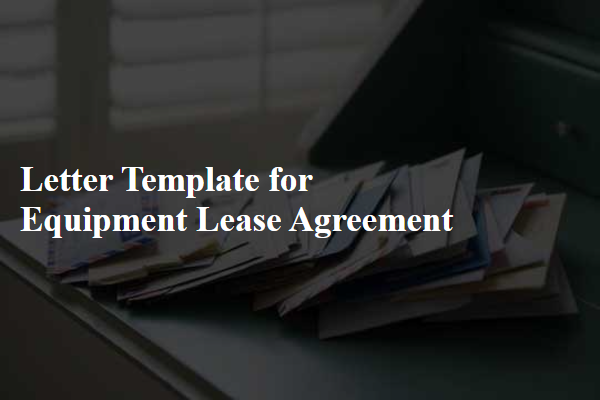
Parties Involved
In equipment lease agreements, key parties include the Lessor, who is the owner of the equipment (often a company specializing in leasing, like Equipment Leasing Company, LLC), and the Lessee, who is the individual or business that rents the equipment (for example, a construction firm such as Build It Right, Inc.). It's essential to detail specific information about both parties, including names, addresses, and legal designations (like sole proprietorship, LLC, or corporation). Identifying the primary contact person for each party, along with their roles, ensures clear communication and helps mitigate disputes throughout the lease period. Additionally, understanding the legal jurisdiction (such as the state of California or New York) where the agreement is executed can influence the enforcement of terms and conditions.
Lease Term Duration
Equipment lease agreements specify important aspects, including lease term duration. Typically, lease term durations range from six months to five years, depending on equipment type, such as construction machinery, office technology, or medical devices. Short-term leases (under one year) suit businesses needing flexibility, while long-term leases (over three years) offer stability and lower monthly payments. Specific lease start dates and end dates are crucial, as they outline the duration of equipment use. Certain industries, like manufacturing or rental services, often negotiate terms based on equipment lifespan or project timelines, ensuring both parties understand their obligations throughout the lease period.
Equipment Description
The equipment lease agreement features various items including a high-performance industrial forklift, model Toyota 8FGCU25, capable of lifting 5,000 pounds with a maximum lift height of 189 inches. The lease also includes a state-of-the-art laser printer, model HP LaserJet Pro MFP M428fdw, renowned for its fast printing speed of up to 40 pages per minute and an automatic duplexing feature. Additional items such as a heavy-duty demolition saw, model Makita 2414NB, designed for cutting concrete and masonry with a 14-inch blade, are part of the agreement. All equipment is located at the leasing company's facility in Houston, Texas, ensuring easy access and transport for leasing clients. Each item is meticulously maintained, with service records and warranties available for review.
Payment Terms
The payment terms outline the financial responsibilities of the lessee (the individual or business leasing the equipment) and the lessor (the equipment owner). Monthly rental payments typically start on the lease commencement date, which is the date the lessee takes possession of the equipment, and continue for a specified term, usually ranging from 12 to 60 months. Payments can include late fees for missed deadlines, often set at a percentage of the overdue amount or a fixed fee, ensuring timely remittance. Security deposits may be required, generally equivalent to one month's rent, held to cover potential damages to the equipment, such as electronic devices or heavy machinery. Additional costs may encompass maintenance fees, insurance premiums, or taxes, depending on the jurisdiction, with the total payment amount being clearly defined in the agreement to prevent disputes. Detailed payment instructions, including acceptable payment methods (checks, wire transfers, online payments), should also be clearly outlined to facilitate smooth transactions.
Maintenance Responsibilities
Maintenance responsibilities in an equipment lease agreement outline the obligations of both the lessor (owner) and lessee (tenant) regarding the upkeep of leased items. Regular inspections must occur to ensure equipment remains in optimal working condition, including machinery such as forklifts, HVAC systems, and medical devices. The lessee is typically responsible for routine maintenance tasks, including cleaning, oil changes, and minor repairs, while the lessor may handle significant repairs or replacements. Timely reporting of malfunctions is crucial to minimize downtime, thus ensuring efficiency in operations. Documentation of all maintenance activities should be maintained, as it serves as evidence of compliance with the terms of the lease. Additionally, proper maintenance guarantees the longevity of the equipment, reducing costs associated with wear and tear.

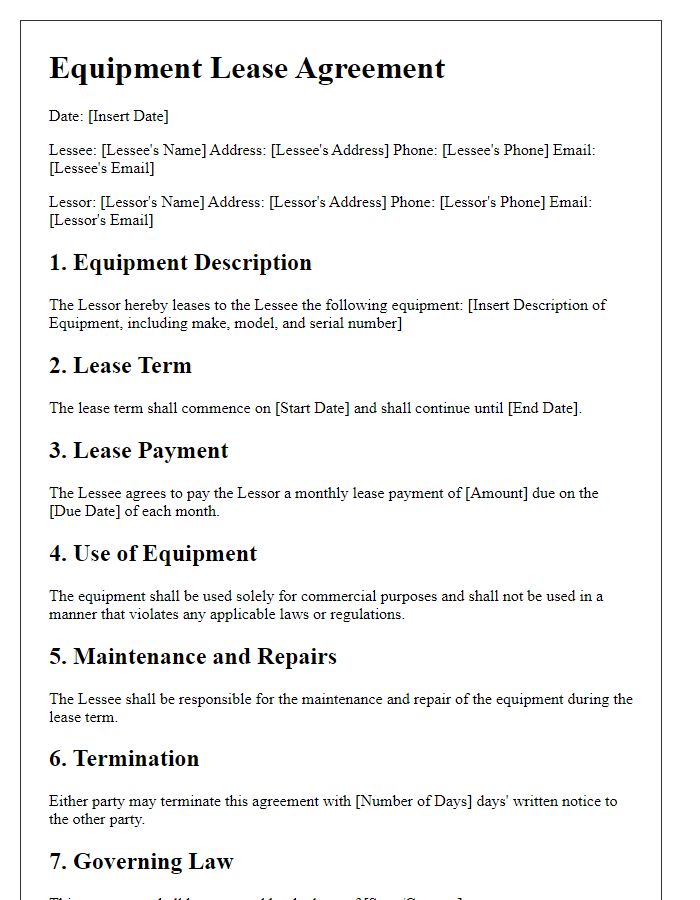
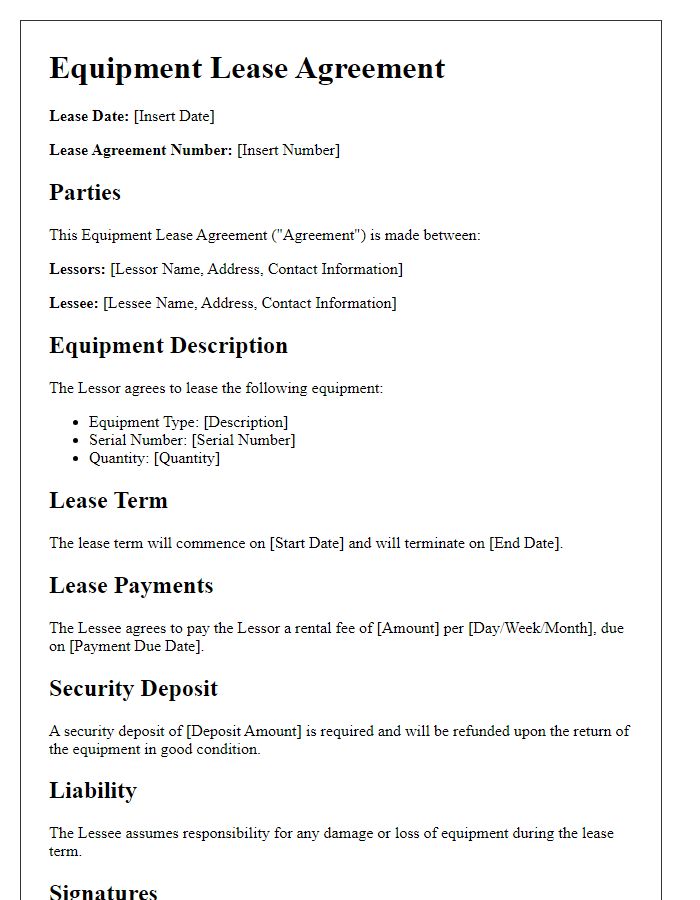
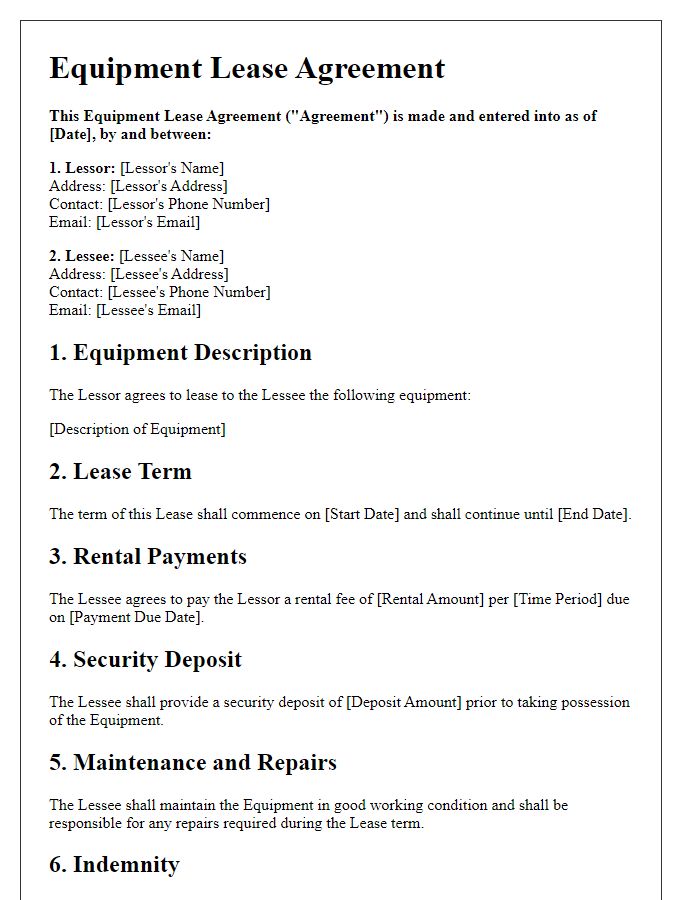
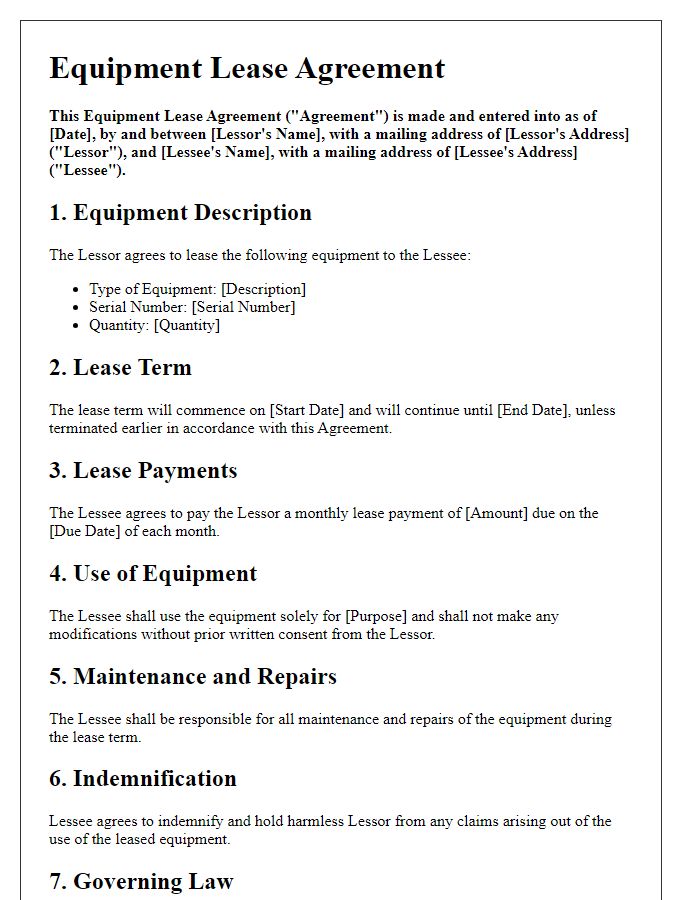
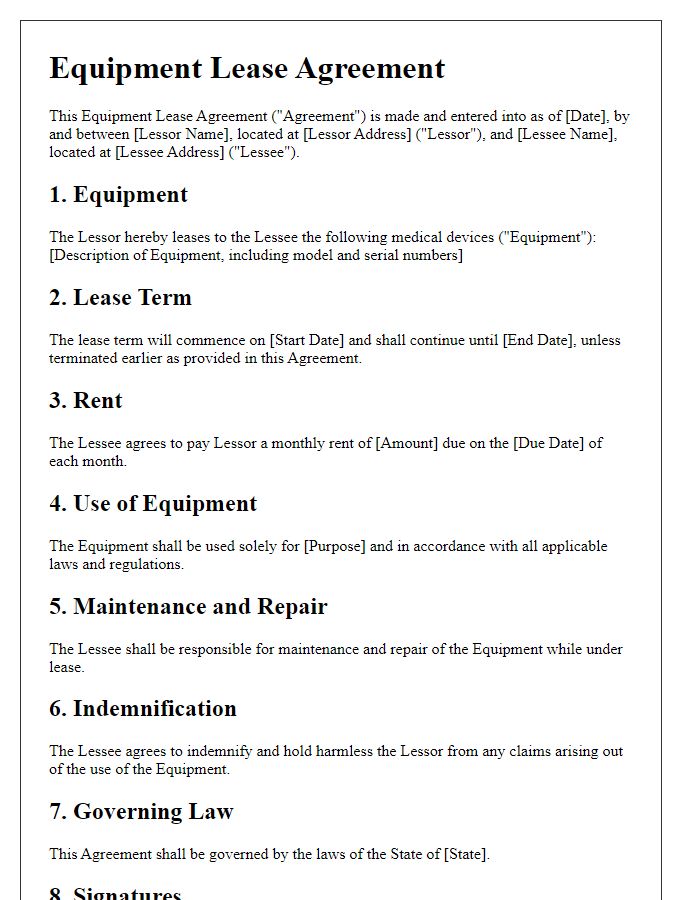
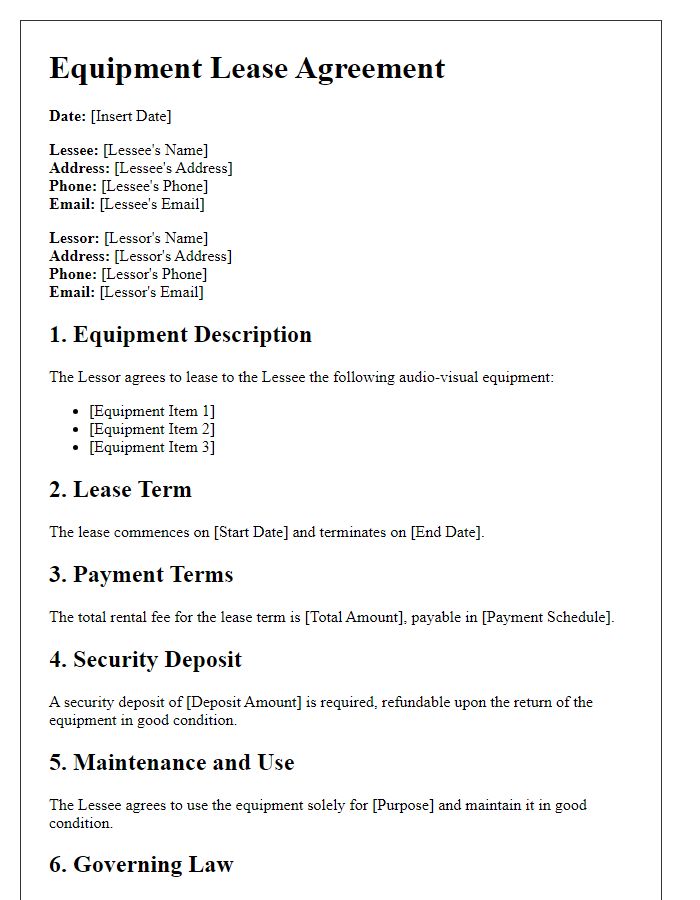
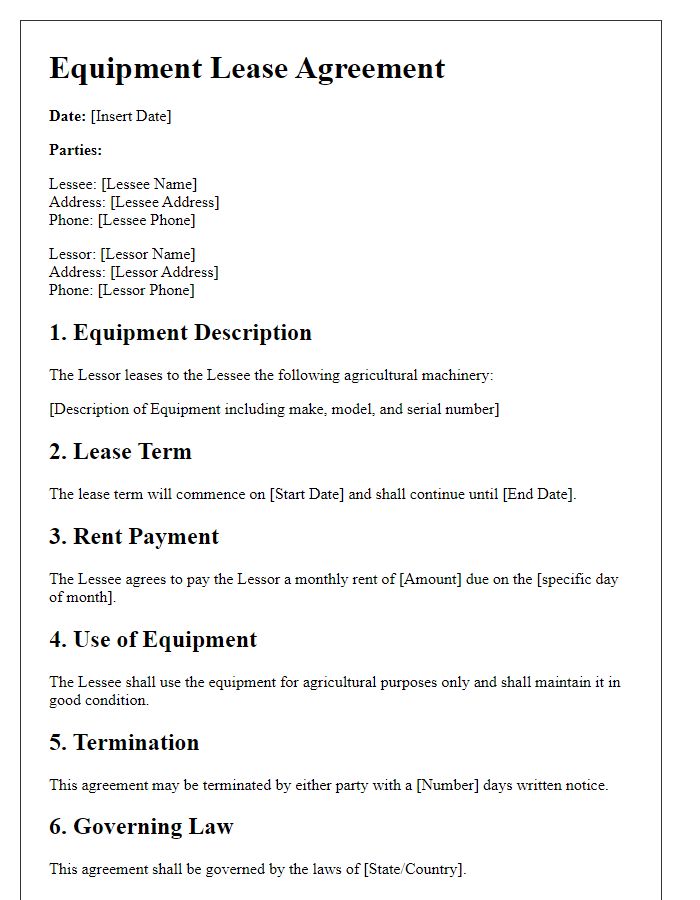
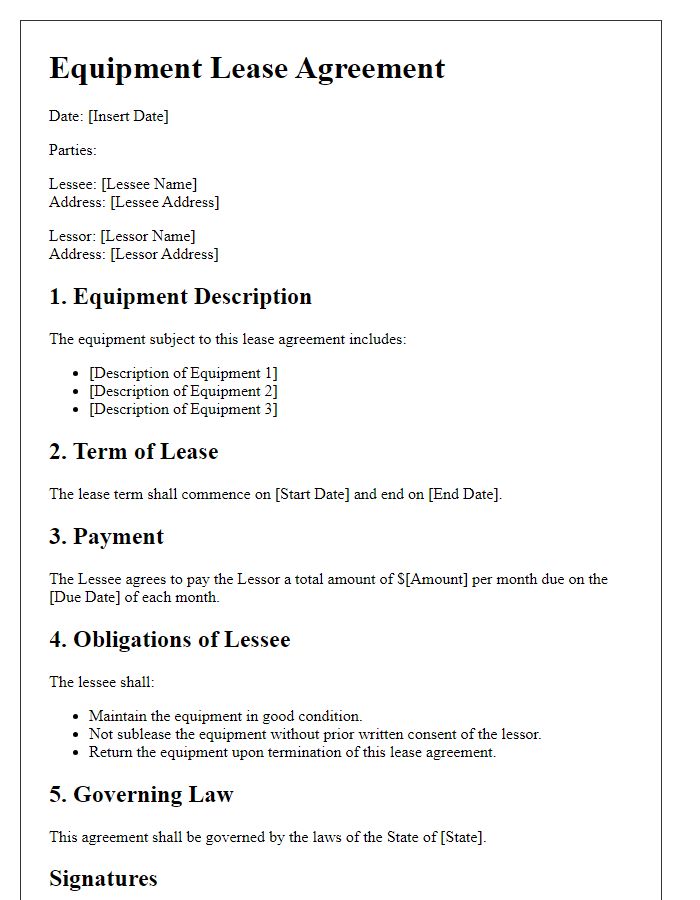
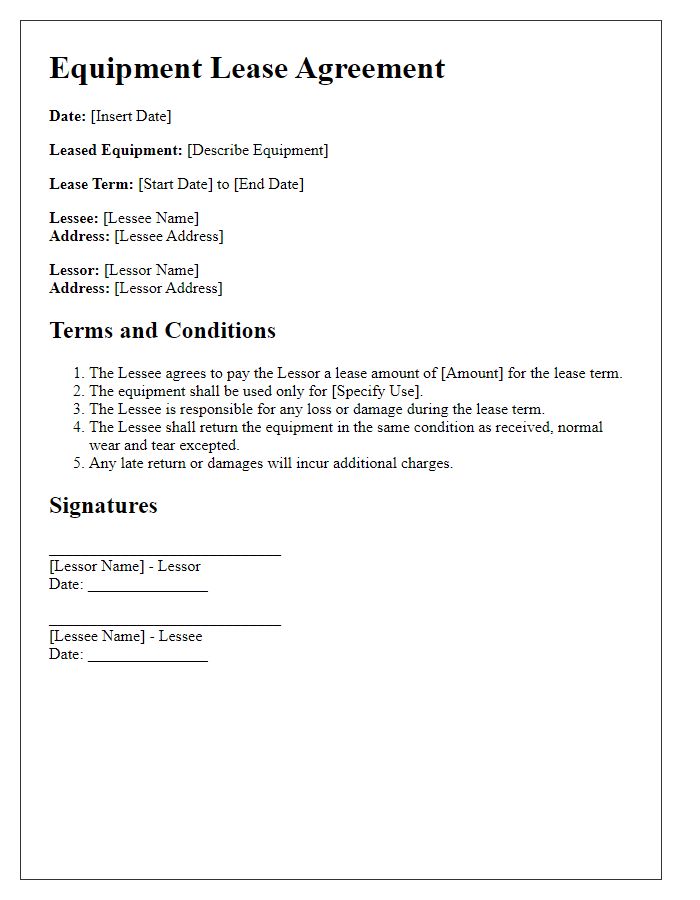
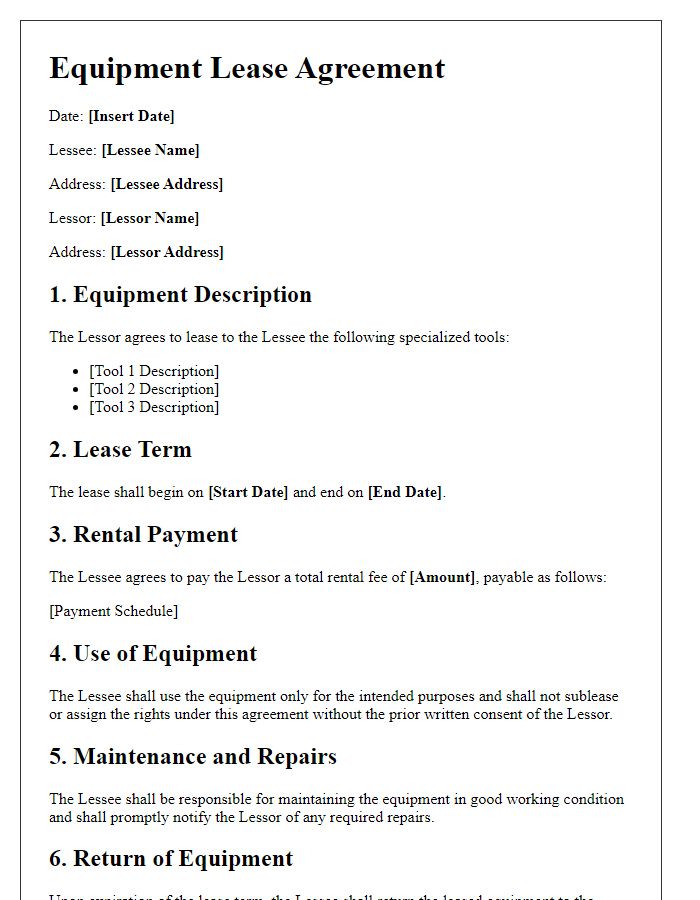


Comments